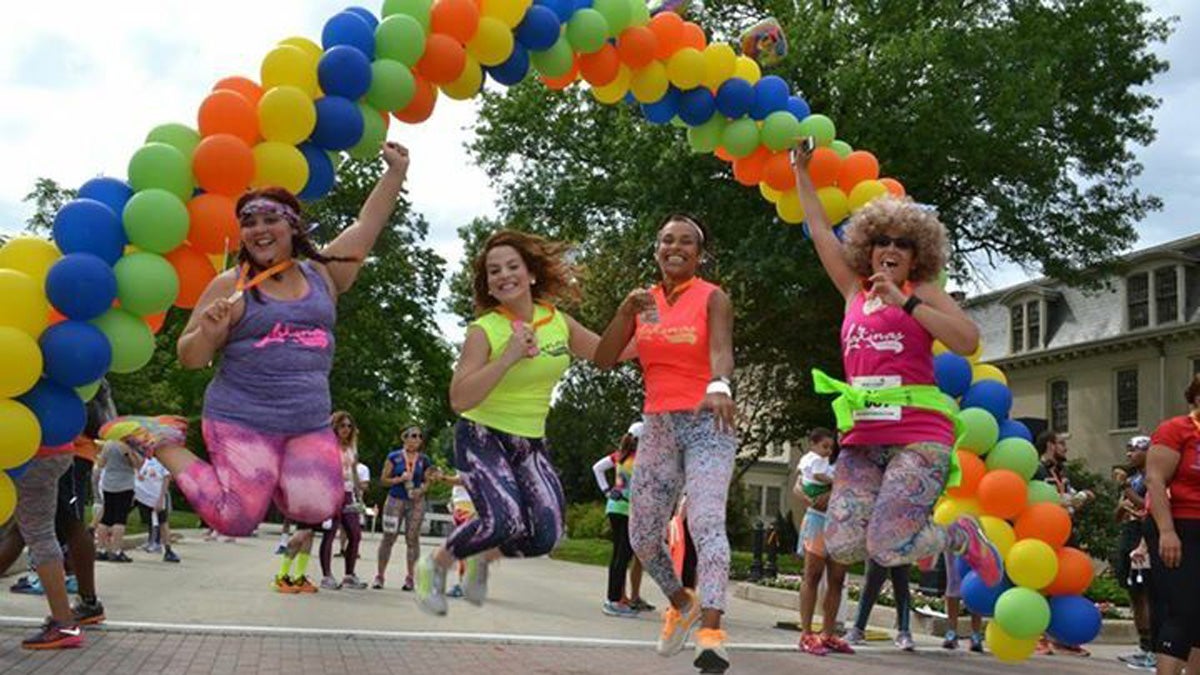As childhood obesity rate dips in Philly, city health teams refocus efforts
Listen
At a recent Latinas in Motion event, women and girls encourage others -- and one another -- to become active. (Momentos by Luz Photography)
Obesity among school-age children in Philadelphia is common — and higher than national averages — but a new study shows city kids are slimming down.
Overall about 20 percent of children are obese, according to the research published in the journal Preventing Chronic Disease. But that 2013 rate is a 6.3 percent decline from 2006.
The research doesn’t pinpoint the reason for the improvement, but the study authors include a long list of anti-obesity strategies in Philadelphia in recent years. Many of the city’s healthy-weight efforts happen in schools, and the availability of more healthful food there may have helped.
Giridhar Mallya, director of policy and planning for the Philadelphia Department of Public Health, said there is especially good news among children in the highest risk group.
“When we look at severe obesity, those levels are down across the board, for girls and boys, and for all racial and ethnic groups,” he said.
Severe obesity can trigger serious illness in children such as diabetes and high blood pressure, which typically only effect adults.
City health officials, who said they intend to refocus efforts to help those groups who are lagging, said Philadelphia’s highest child-obesity rates are among Hispanic boys and girls.
Mallya’s team may design more programs for very young children.
“It may be particularly important for Hispanic kids because they are coming into school age with the highest rates of obesity, so reaching kids between the ages of 2 and 5 will be really, really important,” Mallya said.
Reaching out into the community
As health officials look for fixes, Philadelphia is partnering with community groups such as Latinas In Motion, the Food Trust and the Asociación de Puertorriqueños en Marcha — APM.
One of the Food Trust’s biggest pushes in Latino neighborhoods is the “healthy corner store initiative.”
APM Vice President Angel Rodriguez said his group wants to extend the healthy-weight efforts that children experience in school from 8 a.m. to 3 p.m. to include the entire family.
“When kids leave that safety zone of the school and go into their neighborhoods, how do we duplicate those influences?” Rodriquez said. “It’s a free market. We can’t control grocery stores, but we can increase access to fresh food and exercise.”
Last year, APM launched The Food Buying Club, which delivers affordable fruits and vegetables to the neighborhood. Rodriquez said it’s represented “a huge savings” for families who typically earn $5,000 to $15,000 and are often led by a single mom.
“Crime prevention through environmental design” is another health-promoting strategy that gives neighbors safe passage to be active, said APM’s Antonio Romero.
“We displace crime by activating the community,” Romero said.
Helping young girls find places to play, exercise
Providing girls, in particular, places to play and exercise safely could be important, too.
Latinas in Motion is a not-for-profit that includes online support and meet-ups for women who want to walk, run or exercise together.
In June, the group held its first community 5K “Peace, Love and Run” near Friends Hospital.
“We wanted to bring something to our area, where Latinas would see us moving,” said group founder Elaine Gonzalez Johnson.
When she speaks with new members, Gonzalez Johnson said, the stories are similar. Women often say they weren’t taught to be active as girls.
Gonzalez Johnson grew up near Ella and Tioga streets in North Philadelphia.
“My mom wasn’t for me playing outside because it was dangerous, and because she loved me and cared about me, I had to be inside the house,” she recalled.
Women who join Latinas in Motion become neighborhood role models for aspiring athletes.
“Who’s really out there that these girls can say: ‘I really want to be like her?’ You can’t think of a name that comes right off the top of your head,” Gonzalez Johnson said.
WHYY is your source for fact-based, in-depth journalism and information. As a nonprofit organization, we rely on financial support from readers like you. Please give today.

